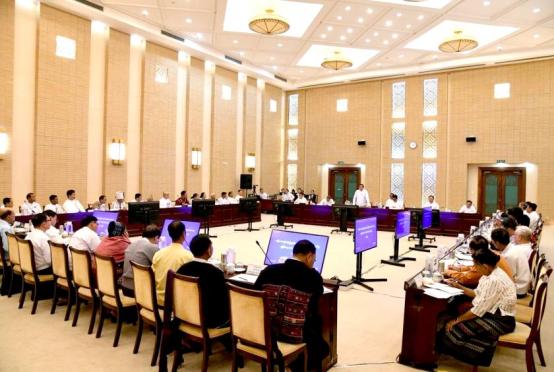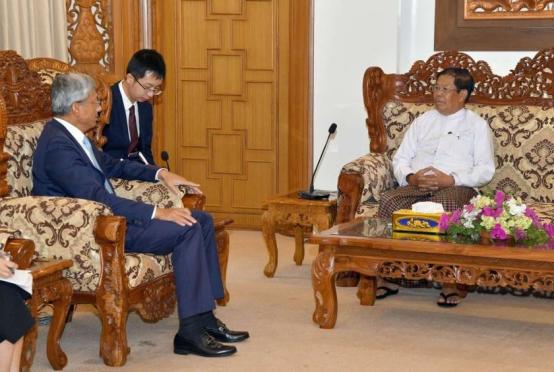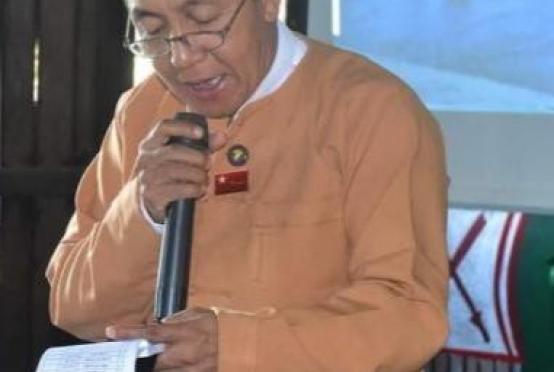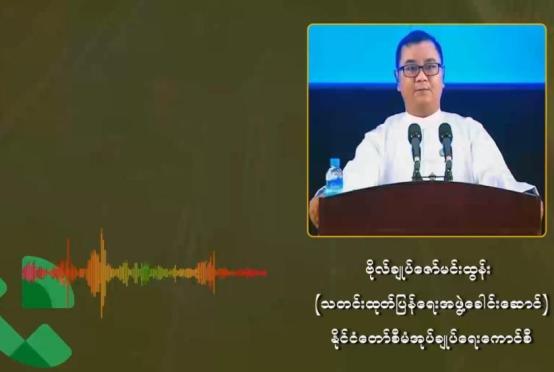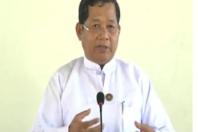
Myanmar defended on December 11, 2019 at the International Court of Justice (ICJ) located at The Hague, Netherlands in the genocide trial initiated by The Gambia.|
The following is the full transcription, as provided by the ICJ website's full verbatim record, of Lawyer Professor William Schabas.
LACK OF A PLAUSIBLE CLAIM
1. Our hearing today does not concern the merits of the claim that The Gambia seeks to bring. It is confined to whether the Court should indicate provisional measures. It is established case law that certain preconditions must be met if the Court is to do so. My presentation will focus on the requirement of a “plausible claim”. I will be followed by Mr. Staker, who will speak to the requirements of prima facie jurisdiction and standing, and then by Ms Okowa, who will complete our first round of observations by addressing the lack of real and imminent risk of irreparable prejudice to the rights in dispute.
The test for plausibility
2. The Gambia seems to accept the plausibility test developed in the Court’s jurisprudence,but has misunderstood the standard applied by the Court. The plausibility requirement is a necessary corollary of the mandatory nature of the Court’s provisional measures. For this reason, the references to provisional measures orders in 1993 may not be as helpful to the Court as The Gambia suggested yesterday, given that they were adopted well prior to the Court’s important ruling on binding provisional measures in the LaGrand case. The Gambia claims that the rights it alleges are plausible provided they are based on a mere “possible interpretation of the Convention”
3. Mr. President, Your Excellencies, twice in the past 12 years this Court issued judgments on the application of the Genocide Convention. It has examined in excruciating detail both the Application instituting proceedings and request for provisional measures (Republic of The Gambia v. Republic of the Union of Myanmar), material and the psychological elements of the crime, applying well-accepted principles of interpretation, studying the travaux préparatoires and showing due deference for specialized bodies like the International Criminal Tribunals for Rwanda and the former Yugoslavia.
Interpretations of the Convention that may have been “plausible” in 2006, before the Judgment in Bosnia and Herzegovina v. Serbia, have ceased to be plausible since then. And, if there was any doubt, the Court’s Judgment in Croatia v. Serbia in 2015, resoundingly confirmed what it had said in 2007.
4. Yesterday, counsel for the Applicant avoided discussing the impact of these recent judgments. There were several references to the 1951 Advisory Opinion but, apparently, none to the 2015 Judgment. In discussing the interpretation of Article 2 of the 1948 Convention, rather than turn to the Court’s recent pronouncements counsel cited Raphael Lemkin’s famous book, published in 1947.
In the sentence that was cited, Lemkin said that the focus of genocide was not on the “immediate destruction” of a group but rather with “destruction of the essential foundations of the life of national groups”. Alas, Lemkin’s original vision, which had much in common with our modern conception of crimes against humanity, did not prevail in the General Assembly in 1948 when the Convention was adopted. The drafters of the Convention settled on a much narrower view of the scope of genocide than Lemkin had contemplated in his book, and one that has since been confirmed in the case law of this Court. It was only on the basis of this narrower conception of the crime of genocide that States were willing to accept and undertake significant obligations, including the compromissory clause. Indeed, more than 70 years later they still hesitate to adopt a comprehensive equivalent convention dealing with crimes against humanity, despite noble efforts of the International Law Commission.
5. Here we are, four years after Croatia v. Serbia, and the Court is being asked to indicate provisional measures based upon allegations that simply cannot meet the terms of the Convention as authoritatively interpreted by the Court. In Croatia v. Serbia, the Court described the distinction between “ethnic cleansing” and genocide, with the former implying displacement and the latter referring to destruction, as and I have highlighted the words on the screen , “solidly rooted in its jurisprudence”. The authority of that Judgment is surely enhanced by the size of the majority, 15 to 2. In Bosnia, the majorities, varying for each paragraph of the disposif, were between 11 and 14. Unless the Court were now suddenly and abruptly to abandon its jurisprudence constante, The Gambia, based upon the facts alleged in the Application, does not have a “plausible” case, a case with any possibility of success.
6. Members of the Court may recall that in the Croatia v. Serbia case, Croatia invited the Court to re-interpret the Convention provisions. You were told, and I quote counsel for Croatia, that “the law has moved on over the past seven years”. The quotation is on the screen. If this case ever gets to the merits stage, I expect you will hear similar statements, proposing once again a break with your established case law. Is this plausible? Does this mean that any claim before the Court that is inconsistent with established case law is plausible because, to return to the phrase in the Application, it consists of a “possible interpretation of the [Genocide] Convention”? Can a challenge to something that is “solidly rooted” those are the words of the Court , in its jurisprudence have a plausible chance of success?
A stricter plausibility test in a genocide case
7. Mr. President, Your Excellencies, the “plausibility” criterion first appeared in the case law of the Court a decade ago in Belgium v. Senegal, a case involving no evidentiary issues.
8. Subsequently, Judge Greenwood wrote that the Court might just as well have opted for the term “arguable”, more widely used in common law jurisdictions. He said: “unless there is a reasonable prospect that a party will succeed in establishing that it has the right which it claims and 10 Application of the Convention on the Prevention and Punishment of the Crime of Genocide (Croatia v. Serbia), that that right is applicable to the case, then it cannot be said that that right might be adjudged to belong to it.
9. Over the years, of course, the Court has become more demanding. In recent cases it has held that both the legal arguments and the evidence presented must be plausible. In Ukraine v. Russia, rejecting a request for provisional measures under the International Convention for the Suppression of the Financing of Terrorism (ICSFT), the Court stressed that the applicant had to “afford . . . a sufficient basis to find it plausible” and that the constitutive elements of knowledge and intention required by the Convention were present. The Court found that there was no sufficient evidentiary basis to find it plausible that such elements of intention and knowledge were indeed present.
10. The rejection of provisional measures in Ukraine v. Russia is especially pertinent because it involved a treaty of international criminal law, a cousin of the Genocide Convention as it were. Subjective intent and knowledge are, of course, also requirements of the Genocide Convention.
11. Thus, for the purposes of provisional measures, a “plausible claim” under the Genocide Convention must include evidence of the required specific genocidal intent. For it is this subjective intent that is the critical element distinguishing genocide from other violations of international law such as crimes against humanity and war crimes, for which in this case the Court obviously lacks jurisdiction.
12. Furthermore, Mr. President, Your Excellencies, in assessing whether the required level of plausibility is met, in relation to both legal and factual matters, the Court should also take into account the gravity of the alleged violations. The Court’s well-established approach, at the merits stage, is that “the graver the charge the more confidence must there be in the evidence relied on”.
13. This principle must apply, mutatis mutandis, at the provisional measures phase, which may also result in a binding decision. Indeed, it must apply a fortiori because the Court is not able to hear full argument, with the respondent unlike the applicant unable to fully develop its own evidentiary base. In a case like this, involving allegations of exceptional gravity, a correspondingly stricter plausibility standard should be applied already at this phase of the proceedings.
Genocidal intent and plausibility: the only inference
14. Mr. President, Your Excellencies, in Bosnia and Herzegovina v. Serbia and Croatia v. Serbia, the Court did not have much difficulty concluding that some of the underlying acts, listed in the paragraphs of Article II of the Genocide Convention, had been established. I do not propose to consume any time here this morning arguing about this point. Let us assume, without making any admission for Myanmar, that a plausible case can be made for the application of at least one of the paragraphs of Article II of the Convention. Much time was consumed at yesterday’s hearing with the recital of what we can all read in the reports of the Fact-Finding Mission, and this despite your reminder, Mr. President, of Practice Direction XI. The hard part, and it was on this that both the applications and the counter-claim floundered in the two genocide cases decided recently by this Court, is the mental element. On this point, the Applicant has had little to say, other than the mistaken assumption that a pattern of conduct is enough to constitute a plausible claim.
15. The United Nations Fact-Finding Mission, upon which the Application relies so heavily, frequently refers to “the inference” of genocidal intent. The theory seems to be that certain types of acts, taken individually or as a whole, tip the balance in favour of a conclusion that they were committed with genocidal intent. With respect, that is not what this Court said in the Bosnia and in the Croatia cases. The real test, and the Court has repeated it on several occasions, is not that genocidal intent be a possible inference. Let me use the language of provisional measures: it is not that genocidal intent should be a plausible inference. The Court has said it is necessary “that this is the only inference that could reasonably be drawn from the acts in question”
16. Addressing the counter-claim in Croatia v. Serbia, the Court said that “for a pattern of conduct, that is to say, a consistent series of acts carried out over a specific period of time, to be accepted as evidence of genocidal intent [I have highlighted the words up on the screen], it would have to be such that it could only point to the existence of such intent, that is to say, that it can only reasonably be understood as reflecting that intent” In declaring that genocidal intent must be the only inference that can reasonably be drawn from the acts in question, this Court has brought great clarity to the law. Instead of focusing on whether genocidal intent is plausible, it looks in the other direction: is there another explanation?
17. There is an enormous amount of unproductive speculation about genocide; it is often prefaced with phrases like “if certain things were proven, it might even be genocide”. And indeed, given the prevalence in the world of today, of racial and religious discrimination, of apartheid-like policies, and of persecution of ethnic minorities, indigenous peoples, migrant workers and refugees, in many countries and conflicts there is no shortage of acts that may fit within the paragraphs of Article II of the Convention and about which it can be said “if certain things were established, this might amount to genocide”.
18. By insisting that genocidal intent, if based on a pattern of conduct, be the only reasonable inference, the Court has developed an effective, realistic and workable approach to the Genocide Convention. Regrettably, there are too many commentators, political figures and campaigners who either misunderstand the Court’s approach or prefer to ignore it. They cherry-pick paragraphs out of its two great judgments yet fail to grasp the most fundamental principle: where genocidal intent is premised on a pattern of conduct, it must be the only inference that could reasonably be drawn from the acts in question.
19. This is as essential to the provisional measures stage as it is to any eventualdetermination of the merits. In the context of a provisional measures application based upon Article IX of the Genocide Convention, the test must be whether it is plausible that genocidal intent is the only inference that can be drawn. In other words, unless it is plausible that another reasonable explanation of the intent for the acts can be excluded, the application must fail. That is a very different test to the one proposed by the Applicant, which is whether genocidal intent is one plausible explanation. The Applicant, as well as the Fact-Finding Mission upon which the Application relies, fail entirely to address the issue of alternative explanations for the intent element. And yet, all they had to do was to read your Bosnia and Croatia decisions in order to know that this was required.
20. The genocidal intent is often described with the term “specific intent” or dolus specialis. We find pronouncements about the “specific intent” (sometimes the formulation is “special intent”) in the earliest judgments based upon the provisions of the Genocide Convention, going right back to the Eichmann case22, the two judgements of the tribunals in Israel, and the judgement of the Trial Chamber of the International Criminal Tribunal for Rwanda in Akayesu.
21. In fact, the term specific intent (or dolus specialis) was employed in domestic criminal law long before international criminal law had even come into existence. In ordinary criminal law, as a general rule crimes of specific intent also contain, or are underlain by, offences that do not require the specific intent. For example, the crime of planned and premeditated murder generally contains a kind of included offence of intentional homicide, or murder, and negligent homicide, or manslaughter. Where the assessment of intent is based upon inferences drawn from a pattern of conduct, rather than upon direct evidence of planning and premeditation, a person will never be convicted of planned and premeditated murder if there is an alternative explanation for that person’s mental element. This is nothing more than the reflection, in ordinary criminal law, of the approach that this Court has taken with respect to genocide.
22. Myanmar submits that the information in the Application and in the materials invoked in its support essentially the reports of the Fact-Finding Mission, provide ample evidence to indicate alternative inferences alternative explanations for the alleged conduct, other than that it is the product of genocidal intent. Should the Court agree that there is ample support for an alternative explanation, then it cannot but conclude that the Application has no reasonable chance of success on the merits. Not a 50 per cent chance. Not a 25 per cent chance. No chance. If there is a reasonable alternative explanation for the intent behind the alleged acts then the Application simply cannot succeed. And if it cannot succeed, it is not “plausible” for the purposes of a request for provisional measures.
Deportation: intent in the ICC proceedings
23. Mr. President, Your Excellencies, in both the Bosnia and Croatia cases, the Court was assisted immensely by the work of the two ad hoc tribunals. Although more limited, there is some activity at the International Criminal Court that may be of help here to the International Court of Justice. It manifests the drawing of an alternative inference, other than genocidal intent, for the alleged conduct of Myanmar.
24. In April 2018, the Prosecutor of the International Criminal Court applied to a Pre-Trial Chamber for a form of advisory opinion as to whether she might be able to exercise jurisdiction over the crime against humanity of deportation given the huge cross-border flows from Myanmar into Bangladesh in 2017. Her application, as well as all of the subsequent proceedings in this matter before the International Criminal Court, relied very heavily on the same materials that The Gambia invokes in this case, principally the reports by the Fact-Finding Mission. It is worth recalling that previous judgments of the Court in genocide cases have taken into account the activities of the Prosecutors of international criminal tribunals.
25. In her application, the Prosecutor said that (and it’s on the screen) “the Rohingya people were specifically and intentionally deported into Bangladesh”. She referred to “the initiation on 25 August 2017 of a ‘clearance operation’ aimed at deporting all remaining Rohingya across the border to Bangladesh”. She expressly distinguished the situation “from a mass exodus of civilians from one State caused for instance by an ongoing armed conflict, without evidence of deportation per se”.In other words, in her view, the intent of the so-called “clearance operation” was deportation from Myanmar, not physical destruction.
26. It cannot have been otherwise, Mr. President, Your Excellencies, because the Rome Statute requires that crimes be committed with intent and knowledge. Crimes against humanity must constitute an “attack directed against any civilian population” that takes place “pursuant to or in furtherance of a State or organizational policy”. In proceeding with prosecutions for deportation for the crime against humanity of deportation the Prosecutor is confirming her own view that the massive flows of persons to Bangladesh were not only intended by those who are responsible, but that they are also pursuant to or in furtherance of a State or organizational policy.
27. Let me make it clear that in discussing the work of the International Criminal Court, both the Prosecutor and the Pre-Trial Chamber, I intend no admission or acknowledgment. But to the extent that this serious and authoritative body provides an alternative explanation, the genocide hypothesis necessarily fails.
28. Only a few days after the Application in the present case was filed, a Pre-Trial Chamber of the International Criminal Court authorized the Prosecutor to proceed with an investigation. Referring specifically to the crime against humanity of deportation, the Pre-Trial Chamber concluded that “a reasonable prosecutor could believe that coercive acts towards the Rohingya forced them to flee to Bangladesh, which may amount to the crime against humanity of deportation”. The Pre-Trial Chamber was confirming that an “alternative inference” for the massive population flows in late 2017 is deportation, carried out with the intent to deport and pursuant to a State or organizational policy.
29. This Court has confirmed that “[t]he forced displacement of a population, even if proved, would not in itself constitute the actus reus of genocide”. Here I cite a sentence from Croatia v. Serbia on the screen. In the Bosnia case, the Court held that: “Neither the intent, as a matter of policy, to render an area ‘ethnically homogeneous’, nor the operations that may be carried out to implement such policy, can as such be designated as genocide . . . [the] deportation or displacement of the members of a group, even if effected by force, is not necessarily equivalent to destruction of that group”. The Court clearly distinguished between “the necessary specific intent (dolus specialis), that is to say with a view to the destruction of the group, as distinct from its removal from the region”. This is a quote from the judgment; the references will appear in the written transcript. Addressing Serbia’s counter-claim in the Croatia Judgment, the Court said that “even if it were proved that it was the intention of the Croatian authorities to bring about the forced displacement of the Serb population of the Krajina, such displacement would only be capable of constituting the actus reus of genocide if it was calculated to bring about the physical destruction”.
The Applicant’s authorities on genocidal intent
30. Mr. President, Your Excellencies, let me now turn to the materials advanced by the Applicant in support of the claim that there is genocidal intent.
31. In paragraph 5 of the Application, the Applicant explains that “facts are extensively documented by independent investigative efforts conducted under the auspices of the Situation in the People’s Republic of Bangladesh/Republic of the Union of Myanmar, United Nations and corroborated by international human rights organizations and other credible sources”. This paragraph in the Application will be discussed, but bearing in mind of course Practice Direction XI.
32. In paragraph 6, the Application turns to the question of genocidal intent. Paragraph 6 of the Application begins with the following claim: “Multiple UN investigations have underscored the genocidal intent of these crimes.” What follows are references to three sources, which I will discuss in turn.
33. The first is to the Special Rapporteur on the situation of human rights in Myanmar, Ms Yanghee Lee. The Application explains that she “carried out extensive fact finding” and, in a report to the Human Rights Council in March 2018 stated “I am becoming more convinced that the crimes committed [in Myanmar] bear the hallmarks of genocide”. The Application also cites a news item from Reuters dated January 2019 where she is quoted saying that the commander-in-chief of Myanmar’s military and other responsible individuals should be held accountable for genocide in Rakhine. The news report also said that her interview “marked the first time Lee has publicly called for the army chief to be prosecuted for genocide”. She never made such statements in any of her reports to the United Nations. Indeed, in various submissions she never mentioned the term genocide other than in a general formulation about how certain acts “may amount to genocide, crimes against humanity and war crimes”. In her 2019 report to the Human Rights Council, she did not even use the word genocide at all. When she spoke to the Third Committee of the General Assembly in October of this year the only reference she made to genocide was observing that “the Gambia [is] considering commencing proceedings before the International Court of Justice”.
34. In all of her writings, the Special Rapporteur provides no explanation for her employment of the phrase “hallmarks of genocide”. She offers nothing whatsoever to suggest that she understands the legal issues relating to its use or that she appreciates the paramount significance of genocidal intent. Ms Lee is a developmental psychologist, not an international lawyer. When the Applicant says in paragraph 6 that “multiple UN investigations have underscored the genocidal intent of these crimes”, describing the remarks of the Special Rapporteur, I submit should not be taken into account by this Court. They do not underscore the genocidal intent. They refer to genocide, not genocidal intent, and they constitute an opinion whose rationale is not explained, nothing more.
35. The second example of genocidal intent is a statement in March 2018 by the UN Special Adviser on the Prevention of Genocide. Speaking of the intent, he says it was “possibly even to destroy the Rohingya as such, which, if proven, would constitute the crime of genocide”. A year later, he issued a statement concerning Myanmar that spoke of “conduct that could possibly amount to the crime of genocide”. I draw your attention to Mr. Dieng’s cautious use of the word “possibly”. In other statements on Rakhine State, Mr. Dieng used the formulation “atrocity crimes” and not genocide. It may not be without relevance to the issue of a risk of genocide in the future that, and according to his website, the Special Adviser has not made any statement about Rakhine State or Myanmar for 15 months. During that period, according to the website, he has issued statements about South Sudan, Cambodia, Guatemala, Bosnia and Herzegovina, Mali, Sri Lanka, Syria and the Democratic Republic of the Congo but not, apparently, Myanmar.
36. The Application considerably overstates the importance and significance of what Mr. Dieng has said. The Special Adviser plays a fundamental role in the genocide-prevention activities of the United Nations. His function is early warning, not pronouncements on whether or not genocide has been committed. I think he would himself object to being cited as authority for the existence of genocidal intent.
37. The Application also did not mention the other UN bodies that have concerned themselves with the situation in Rakhine State over the past two years. For example, shortly after the events of August-September 2017, the High Commissioner for Human Rights described them as “a textbook example of ethnic cleansing”. Some months later, he started using the term “genocide”, but again with the caution and equivocation that we have already seen with the other mandate holders. There are many other examples, some of them quite recent. The resolution on Myanmar adopted by the Human Rights Council in September 2019 refers to “the need for an urgent criminal investigation into alleged crimes against humanity and war crimes”. It doesn’t mention genocide. Nowhere is the word “genocide” used in the Human Rights Council resolution. Similarly, a resolution on Myanmar adopted by the Third Committee only a few weeks ago makes no reference to genocide. In July of this year, the Deputy High Commissioner for Human Rights reported on Myanmar to the Human Rights Council without reference to “genocide”.
38. The most substantial discussion of genocidal intent, of course, and the one on which the Application largely relies, is that of the Fact-Finding Mission. It launched the genocide claim in its September 2018 report. The Mission concluded without equivocation that crimes against humanity and war crimes had been committed. On genocide, it was somewhat more circumspect: it said that there was “sufficient information to warrant the investigation and prosecution of senior officials in “UN human rights chief points to ‘textbook example of ethnic cleansing’ in Myanmar”, 11 Sept. 2017 the Tatmadaw chain of command, so that a competent court can determine their liability for genocide in relation to the situation in Rakhine State”
39. The Mission briefly explains what it means by “reasonable grounds” in the introductory part of its long report. But it also adds the following caveat: “This standard of proof is lower than that required in criminal proceedings".
40. There is a summary discussion of the intent issue in the 440-page supplement to the Mission’s 2018 report. It devotes 113 words in a 440-page supplement to considering whether the intent may have been “to displace the Rohingya population, but not to seek its ultimate destruction”. One hundred and thirteen words. And this is the very hypothesis on which the Prosecutor of the International Criminal Court has based her activities. The Mission does a little bit of textual sleight of hand by referring to the “physical destruction of Rohingya life as it once was”, a formulation that ever so slightly blurs an important distinction between physical and cultural genocide, one to which this Court has previously attached considerable significance.
41. Elsewhere, in words that are cited in the Application, the Fact-Finding Mission states: “The crimes in Rakhine State, and the manner in which they were perpetrated, are similar in nature, gravity and scope to those that have allowed genocidal intent to be established in other contexts”. But, they do not provide any reference or examples to what those other contexts are. The Mission might just as well have said the opposite. Because in other contexts, similar in so many respects to the circumstances in Myanmar, this Court and the International Criminal Tribunal for the former Yugoslavia have concluded that genocidal intent was not established. The Fact-Finding Mission essentially ignores this dimension. With respect, it is campaigning for a case rather than assessing a situation in an objective and impartial manner, and it is indifferent as to factors that tend to prove the contrary.
42. That said, the Fact-Finding Mission is not entirely consistent on the subject of intent. For example, when it discusses what it calls a policy of “food starvation”, the Mission says that such “targeted actions to deny access to food appear to constitute a policy of forcing Rohingya to flee through food deprivation”. The Mission says that starvation is intended to force Rohingya to flee. That is not the same thing and does not necessarily point to physical destruction. Yesterday, counsel for The Gambia suggested a genocidal intent with respect to food deprivation without even addressing this alternative explanation, which is proposed by the Fact-Finding Mission.
43. Other statements in the Fact-Finding Mission report also point to an intent other than one to destroy. It speaks in the report of the so-called “Four Cuts” counter-insurgency policy, which has allegedly been practised since the 1960s. “The policy has been implemented through ‘clearance operations’, essentially scorched earth campaigns in which large numbers of civilians are killed and entire villages destroyed, leading to mass displacement”, says the report. But nobody is seriously alleging that there has been a policy driven by genocidal intent underway since the 1960s. Did something change? Why is a “clearance operation” in 2017 different from one in previous decades? This question is not addressed.
44. Counsel for the Applicant has attached significance to a statement by the Fact-Finding Mission in its more recent report of this year, issued a few months ago, in September, that genocidal intent has “strengthened”. There were several references to this yesterday. Counsel did not tell us why the Mission reached such a conclusion. And I can explain why Counsel did not mention it: because the Mission did not mention it. It appears that the only thing that appears to have strengthened is the insistence of the Mission on using the term. There is no real evidence of any aggravation of the situation described in the report of the previous year; rather, the contrary. If anything, the absence of allegations of significant numbers of killings in the second report ought to suggest the contrary to what the Mission concludes.
45. Mr. President, Your Excellencies, the fact-finding missions of the United Nations ,I was the chairman of one of them, play a hugely important role in the protection and promotion of human rights. The same can be said of the Special Rapporteurs and the Special Adviser on the Prevention of Genocide. These comments are not meant to denigrate their work but only to show how very limited their contribution can be to the issues that are before this Court, especially when they go beyond their mandate of genuine fact-finding and begin to speculate on the elements of international crimes. The Fact-Finding Mission’s mandate from the Human Rights Council was “to establish the facts and circumstances”, not to make legal findings. Its determinations, couched in phrases like “reasonable grounds” and “sufficient information”, when the issue is genocidal intent cannot be of help here. Most importantly, the validity of the opinion of the Fact-Finding Mission about genocidal intent is undermined by its failure to consider, in any substantive manner, the issue of alternative explanations. Although the Fact-Finding Mission’s reports may contain valuable factual information, it is suggested that its legal determination should simply be disregarded by the Court because of its flawed approach.
46. Mr. President, Your Excellencies, without the three sources invoked by the Applicant as authority for the existence of genocidal intent, the Application is devoid of any support for the existence of genocidal intent, beyond the implication that the Court infer the existence of genocidal intent from a pattern of conduct an approach that it has rejected more than once. This is familiar territory for the Court, because it is not different in any meaningful way from what it heard from counsel during the Bosnia and the Croatia cases.
Numbers and their relevance
47. There are some other striking omissions in the Application. Nowhere does the Application specify the number of deaths, the total number of deaths, and compare this with the size of the population that was allegedly attacked, and that crossed the border into Bangladesh. Of course, the Application attaches considerable importance to the quantitative aspect, to numbers, because on several occasions the Court is told how many buildings were destroyed. The Court is also informed of the number of villages that were destroyed, totally or partially. And yesterday, counsel for the Applicant told us of many hundreds of deaths in three villages, totalling a little more than 1,000. It tried to present this as a kind of representative sample, explaining that there was one village taken from each of the three townships. But in fact, these were three of the four worst cases described in the Fact-Finding Mission report. But no total is proposed, either in the Application or in yesterday’s submissions. Perhaps this is the first court proceeding anywhere involving the Genocide Convention where the total number of victims was not volunteered by the applicant. Information on this point can be found in the lengthy annex to the Report of the Fact-Finding Mission, where we are told that there were an estimated 10,000 deaths, with 725,000 refugees who fled to Bangladesh and 600,000 who remained in Myanmar. The application by the Prosecutor of the International Criminal Court also alleges “the killing of up to 10,000 Rohingya” and “the deportation of over 700,000 Rohingya into Bangladesh”
63. Is it possible, Mr. President, Your Excellencies, that the Applicant neglected to provide the Court with allegations and evidence of the estimated total number of deaths because it sees this as weakening its claim that the intent was physical destruction of the group?
48. If this case ever goes to the merits, Myanmar will produce evidence challenging the figure of 10,000 as an exaggeration. Any estimate, moreover, of the number of killings ought also to provide some indication of the number of combatant deaths, and those attributable to the Arakan Rohingya Salvation Army. The Fact-Finding Mission, moreover, provides numerous aerial photographs, yet nowhere does it point to any evidence of mass graves. Whatever the number, every death is tragic. Families have been devastated. Killing non-combatants in an armed conflict may violate the right to life. But 10,000 deaths out of a population of well over one million might suggest something other than an intent to physically destroy the group. This inconvenient fact is not addressed by the Fact-Finding Mission. I can already hear the objections from counsel for the Applicant, who will explain that genocide is not just about the numbers. But here is what this Court had to say in Croatia v. Serbia, four years ago: “The Court considers that it is also relevant to compare the size of the targeted part of the protected group with the number of Croat victims, in order to determine whether the JNA and Serb forces availed themselves of opportunities to destroy that part of the group. In this connection, [and the words are on the screen] Croatia put forward a figure of 12,500 Croat deaths, which is contested by Serbia. The Court notes that, even assuming that this figure is correct — an issue on which it will make no ruling — the number of victims alleged by Croatia is small in relation to the size of the targeted part of the group.”
49. The Court concluded that “Croatia has not established that the only reasonable inference that can be drawn from the pattern of conduct it relied upon was the intent to destroy, in whole or in part, the Croat group”. Mr. President, Members of the Court, any reasonable consideration of the situation in Myanmar, if it is guided by the case law of this Court, will ask whether 10,000 deaths out of a population of well over a million raises the same doubts as it did for this Court in the Croatia case.
50. Numbers are important in other respects. The Fact-Finding Mission referred to the 600,000 Rohingya who stayed behind. It said, in the detailed findings to the 2019 report, the more recent one: “The Mission found that movement restrictions, applied to the Rohingya in a discriminatory and arbitrary manner, touch almost every aspect of the lives of the 600,000 Rohingya remaining in Rakhine State, affecting basic economic, social and cultural rights, including their ability to sustain themselves, obtain an education, seek medical assistance or even pray and congregate.”
This is a claim of human rights violations, of persecution, but not of destruction. Had there been a genocidal plan afoot, one would expect a more sinister fate. I think the same can be said of those Application of the Convention on the Prevention and Punishment of the Crime of Genocide (Croatia v. Serbia), allegedly confined to displacement camps, reportedly numbering well over 100,00067, who have been in the camps for seven years. And the Mission, the Fact-Finding Mission, said that “[i]nsecurity levels in camps are high and many displaced persons have a sense of despair for the future”. It said that the adverse conditions in these camps “in extreme cases lead[] to preventable deaths”, a comment that stands out because the report does not seem to contain any claim of intentional killing in the camps. The Mission never attempts to explain why there appears to be no evidence of systematic physical destruction in the displacement camps, perhaps because this might provide a reasonable explanation that runs counter to the genocidal intent hypothesis.
51. The similarities with the situation in Myanmar, as alleged in the Application, and the findings of the Court in Croatia v. Serbia, are striking in other respects. In Croatia, the Court found that “In the present case, as emerges in particular from the findings of the ICTY, forced displacement was the instrument of a policy aimed at establishing an ethnically homogeneous Serb State. In that context, the expulsion of the Croats was brought about by the creation of a coercive atmosphere, generated by the commission of acts including some that constitute the actus reus of genocide within the meaning of Article II (a) and (b) of the Convention. Those acts had an objective, namely the forced displacement of the Croats, which did not entail their physical destruction. . . .[And the final words are on the screen.] The Court finds that the acts committed by the JNA and Serb forces essentially had the effect of making the Croat population flee the territories concerned. It was not a question of systematically destroying that population, but of forcing it to leave the areas controlled by these armed forces.”
52. To conclude, Mr. President, Your Excellencies, the Application fails utterly to address the essential issue of the specific intent to perpetrate genocide. As the Court has said repeatedly in its recent case law, where proof of genocidal intent depends upon inferences drawn from a pattern of conduct, other explanations for the mental element of the crime must be excluded. The Application, and the oral submissions by counsel, do not even speak to this essential point. For that reason alone, the request for provisional measures should be rejected. Mr. President, Your Excellencies, that concludes my observations. I would ask, Mr. President, if you would be kind enough to give the floor to my colleague, Mr. Staker, although perhaps it is the right moment to take a break.

